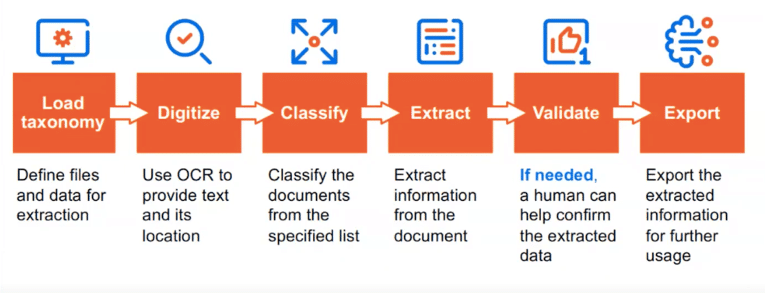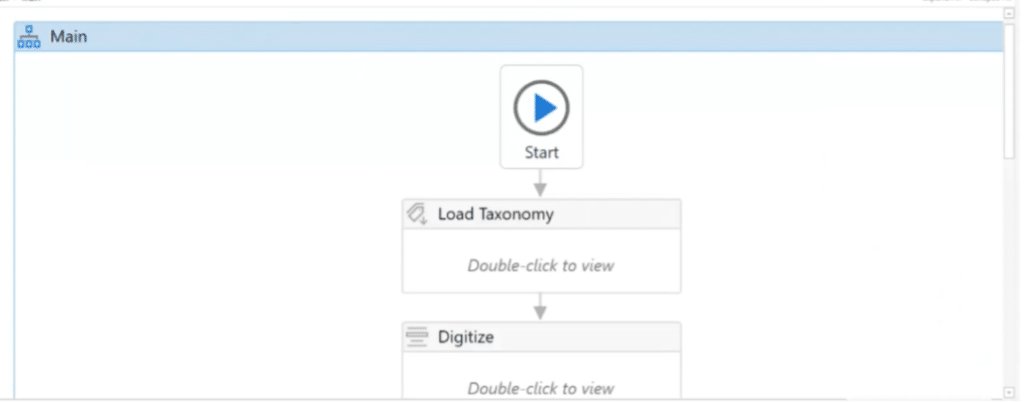Robotic Process Automation (RPA) can save your company time and money and refocus important resources to higher value activities. One of the best tools to get started with is UIPath.
It’s an eternal business quest: find innovative ways to reduce costs, increase productivity, reduce errors, and make employees more productive. Automation has successfully chased this goal since man first made tools. Smart companies are now adopting the newest breed: AI-powered Robotic Process Automation, or RPA. RPA combines software, analytics, AI, and process automation techniques to automate routine and repeatable tasks, freeing workers to work on more valuable activities. This saves the organization big money while improving efficiency and business performance.
Despite all of our great efforts to digitize the world, today’s businesses are still stuck doing a lot of tedious, repetitive, routine tasks. We’re constantly collecting and processing documents, filling out forms, and cutting and pasting between apps new and old. We’re still processing a lot of physical paper or their barely-digital scanned/PDF counterparts.
Companies are constantly looking for the big, obvious cost-cutting, work-reducing tasks to tackle with automation. Those mountains of unsorted emails, those stacks of application forms, those reams of financial documents, and the armies of tired staff that deal with them are all ripe for an automation overhaul.
A potent and early RPA opportunity: document processing.
Document processing is a prime target for AI and RPA. All organizations deal with documents, and most organizations have to do a lot of it. Documents are information-intensive in nature, often routine and repeatable, and represent a significant cost area to target. Industries like banking, finance, insurance, manufacturing, and the public sector tend to be overwhelmed with documents. Many departments within companies tend to be document-intensive, including HR, AP, AR, sales, and procurement/logistics.
Documents and systems everywhere: Look familiar?

Companies who pursue document processing automation typically see big, immediate benefits. According to UiPath’s research, companies can realize a 35% reduction in effort/costs compared to manual document processing. They also see a 52% decrease in processing errors. This greatly mitigates the risk of rework and related losses. Employee time expended can be reduced by 17% and many see a 40% increase in employee productivity or customer satisfaction.
Consider the routine documents you may find in your organization. It could be a contract, an invoice, a purchase order, bill of lading, or a license. For example:
- In finance, we see IRS forms, loan applications, account opening documentation, claims processing, and lots of compliance documentation.
- In HR, we’ll see employee onboarding, HR records processing, and resume screening.
- In sales and service, there are sales orders, parts requests, and delivery forms. Most operations departments have their ample share.
Real companies, real benefits
Take, for example, an AI-driven email and mailroom automation tool we recently implemented for a client. A public sector legal department with over 900 lawyers required a 10+ person team to simply read, prioritize, and route thousands of incoming legal communications via email and physical mail.
An advanced AI and RPA tool was built to handle the initial prioritization and classification of incoming communication. The AI agent works 24/7 using natural language processing and machine learning to analyze each document for intent, content, sender, and other information. The agent then tags the communication for the team to continue processing. The AI also knows when to say “I don’t know” and flags the message as an exception for human intervention. Once the organization has confidence in the accuracy of the models, the full stack is deployed that handles the routing of the communications and integration into backend document management and practice systems.
Prior to backend integration, based on a 99% categorization accuracy with zero false positives, the solution resulted in a 90% reduction in manual review time, creating large cost savings and the reassigning of resources to more valuable tasks.
Another company we did work for is a leading housing and mortgage investment firm that struggled to keep pace with customer demand due to cumbersome legacy systems and manual processes in multiple lines of the business. The company was in “Excel hell” with monthly data processing, document handling, and transferring repeated data across multiple systems and users. Repetitive tasks were choking parts of the organization and slowing customer response times.
The initial project focused on analyzing the existing processes and designing new ones where AI, RPA agents, and enhanced data management could act on behalf of human labor. The new RPA solutions were a success, and operations that formerly were run weekly or monthly now run in real-time and 24/7, meaning that the organization is more responsive and nimbler to getting work done and satisfying customers.
The company saw a 10X return-on-investment in the early projects. This success led the CEO to start a new efficiency center of excellence, putting the RPA lead in charge of the company’s efficiency and automation initiatives to repeat similar solutions in every business unit of the company.
What can AI and RPA actually do with documents?
Many employees may be fearful of AI coming to take their job, but later see there is little magic or mystery to automation. An AI agent can complete routine tasks. It can log into an application, move files and folders, read and write to databases, scrape data from the web or legacy systems, connect to APIs, extract content from text documents (e.g., PDFs, emails, forms), open and send emails, and make calculations.
Beyond these more procedural activities, today’s AI agents can also read and understand (so to speak) the information they are processing. This enables them to put the appropriate data where it is needed, only process relevant documents, and be able to smartly route or make judgements on what to do. They can be trained to learn new tasks as they are introduced over time.
UiPath’s RPA Process Framework

The typical document management RPA process goes through several key steps. First, the document taxonomy is determined. This decides if the file is relevant for processing by type. It is next digitized by being scanned (if necessary) and processed through OCR to get its text. The document is then classified by its specific type from a pre-determined list of options. Then, information can be extracted and validated with human eyes if needed. Lastly, it is exported to be used in its next step of action, which can be forwarding to another person or system, entering into a database, adding to the CRM, filed, discarded, etc.
The range of activities that can be automated is growing in sophistication. Robots (physical, as in manufacturing) and macros have been around for a while to do very routine and repeatable tasks. As AI sophistication grows, we can introduce machine learning, natural language processing, image/video processing, and more to give the agents the ability to handle more complex and more interpretive tasks that previously required human intervention. As we mature, we can move from simple read/extract/enter type transactions to those that require discrimination, interpretation, and even creativity.
The automation of these processes has many tangible benefits. By taking most of the human out of the equation, we can accelerate productivity, reduce errors, create efficiency, and deliver better customer experiences. We can make employees happier and more valuable as their workloads shift to more complex and satisfying tasks.
Designing document processing RPA
For UiPath in particular, the interface works much like the process steps listed above (i.e., taxonomy, digitize, classify, extract, validate, export etc.,) providing a graphical representation of those steps with ability to configure, set parameters, and train each area. This is the process design screen where the process automation designers/specialists can create how the AI agent will handle documents. The interface allows the process designers to monitor the intake and processing of the document through each step.
The UiPath Interface is organized by their RPA process framework

For example, after the document is read by the OCR, they review the output text to see if the robot is working correctly. They can also look to see if the document was classified correctly. For example, if the document was a Purchase Order, did the agent classify it as such? Next, they can check if the agent identified the correct pieces of information it read. For example, was it able to identify the correct name of the vendor on the PO and place that information into the vendor field from a drop-down list? The agent can provide “confidence” scores along the way to suggest what it thinks of the quality of the outcomes. Lastly, the information is then exported in the proper format to be entered into an order system, forwarded to another associate, or automatically entered into another system.
Some of the features of the process automation tool include:
Taxonomy: The ability to establish the known or expected types of documents that are to be taken in and train the agent to correctly identify them.
OCR: Use of either a generic or third-party OCR engine. Available OCR engines are able to recognize both computer generated and handwritten text.
Classification: The AI can read the document and look for pre-programmed indicators (“classifiers”) to determine what information it is consuming and how to classify the document or its parts.
Extraction: The agent can be trained to quickly identify and extract information stored on known forms and documents.
Machine learning extraction: For documents that have unknown or eclectic formatting, the machine learning extractor can analyze the existing text to find likely candidates data extraction.
Export engine: The agent identifies and extracts the needed information into the format and length needed and passes it along to the next step in the workflow.
For a more detailed walkthrough, we recommend watching this video that we created to explain the UiPath interface. It’s a fast and useful dive into a powerful tool.
What’s next?
You probably have RPA opportunities that are already coming to mind: You’ve got the documents and the weary employees that process them to prove it. You also have a big cost savings and efficiency play available with RPA. The business case is so clear on this one: reduce the labor, get your business done quicker with fewer mistakes, and make your employees and customers happy. The first step is to find that first obvious document processing candidate for automation. Pick one to start. Use it to learn how an AI RPA tool like UiPath can make a difference. Use what you learn to make your case to tackle a second and third task. Eventually, you too may have an entire RPA efficiency revolution throughout your enterprise. The first step is to educate yourself and others on the opportunities, the tools, and the benefits. Begin your RPA journey now.




